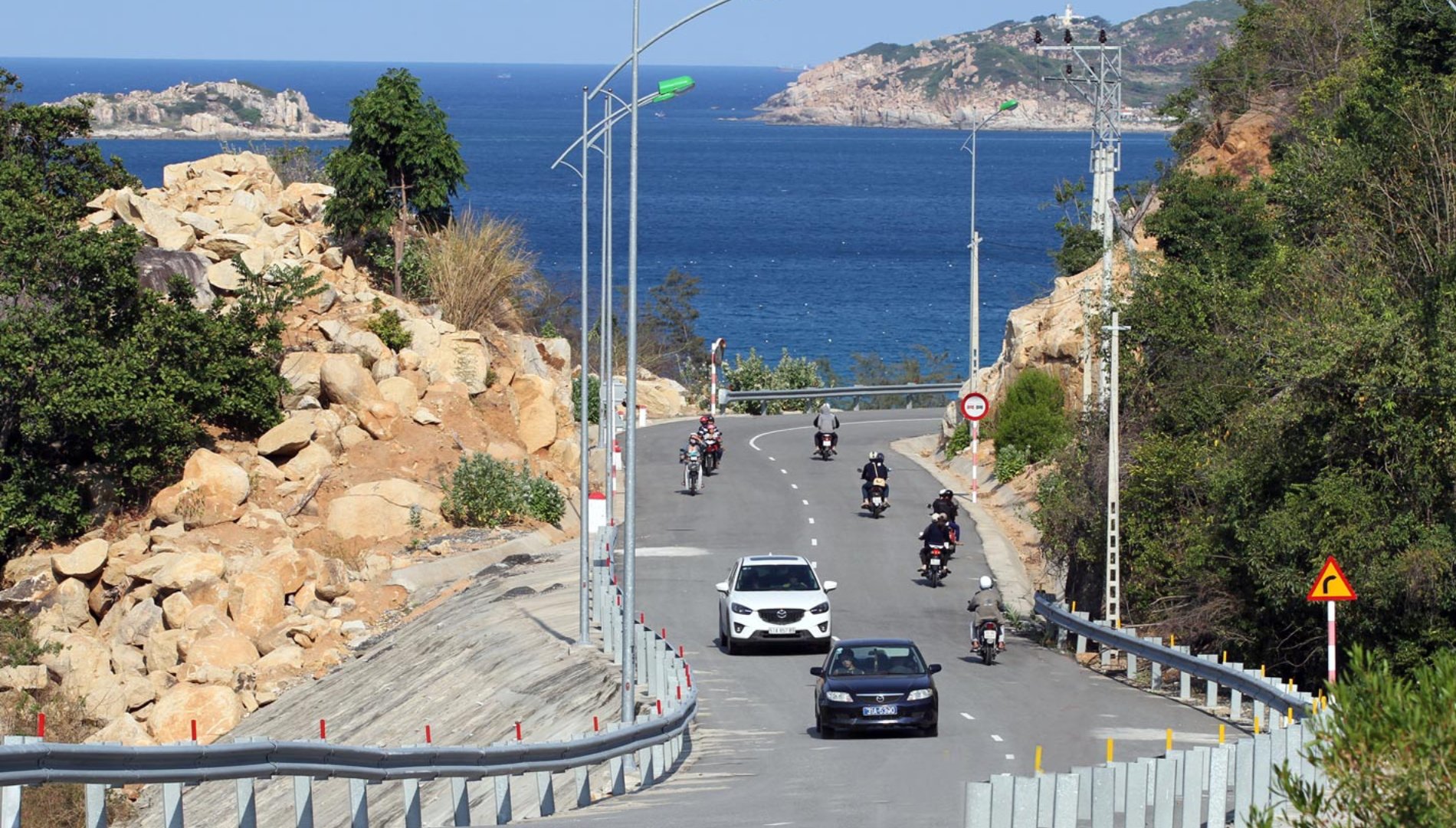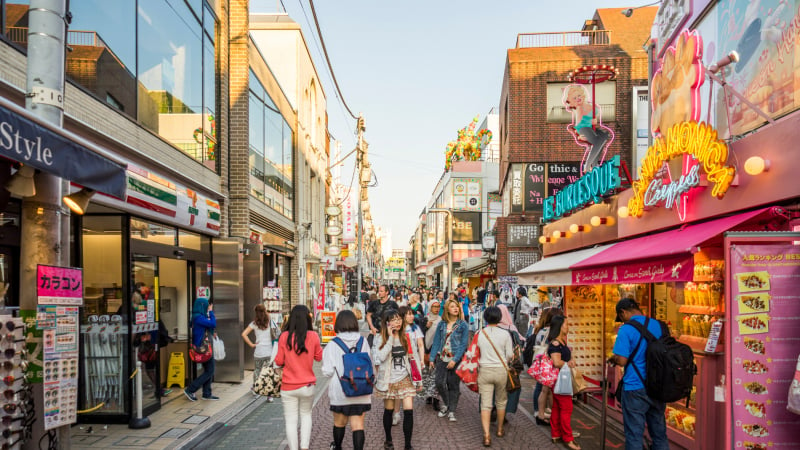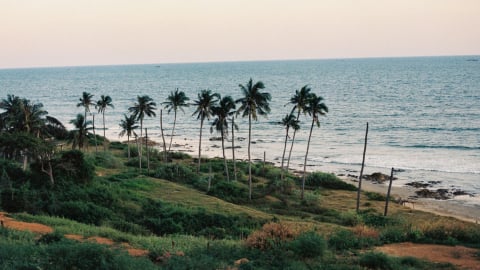Decision No. 759/QD-TTg, issued on April 14, 2025 by the Prime Minister, officially approved the strategic project on the arrangement and reorganization of provincial-level administrative units, and at the same time, creating a two-level local government organization model, opening a new chapter in the development process of many localities across the country. Accordingly, the merger of two potential South Central coastal provinces, Ninh Thuan and Khanh Hoa, to form a new province called Khanh Hoa province.
This historic merger is not only a geographical and administrative merger, but also promises to bring about far-reaching economic, cultural and social changes to the region. In particular, the new Khanh Hoa province will become the locality with the longest coastline in Vietnam. With Khanh Hoa’s already impressive coastline of 385 km, now added with the 105 km of beautiful coastline of Ninh Thuan, Khanh Hoa province will hold a huge advantage in marine resources, opening up unprecedented opportunities for sustainable development.
"Soft silk strip" connecting two famous bays of Nha Trang
Dubbed as a "soft silk strip" across the picturesque landscape of Khanh Hoa, Nguyen Tat Thanh Avenue with an impressive length of more than 35 km proudly stretches out, acting as a bridge connecting two precious gems of Central Vietnam's coastal tourism: the poetic Nha Trang Bay and the charming Cam Ranh Bay. Starting from the vibrant heart of Nha Trang city, this road follows the coast, embracing the magnificent landscapes before merging into Cam Lam district, where it intersects with National Highway 1, opening up new horizons of discovery.

Here, time seems to stop, visitors can immerse themselves in the extremely charming beauty.
It is no exaggeration to say that Nguyen Tat Thanh Avenue is the most beautiful road in Khanh Hoa, a masterpiece of the harmony between modern infrastructure architecture and wild natural beauty. The journey on this avenue is like an emotional excursion, when visitors can admire the soft curves around the majestic Cu Hin pass, stretching like an arc embracing the blue water, creating a strangely peaceful and relaxing scene.

This place has an extremely convenient location for visitors.
Not only possessing captivating beauty, Nguyen Tat Thanh Boulevard is also a vital route, playing a key role in connecting Nha Trang city center with Cam Ranh International Airport, an important trade and tourism gateway of the region.
Thanks to this route, tourists from all over can easily and quickly access attractive destinations such as the pristine Bai Dai beach, high-class resorts springing up along the coast, thereby strongly promoting the economic development of the entire region and increasing the value of potential coastal real estate.
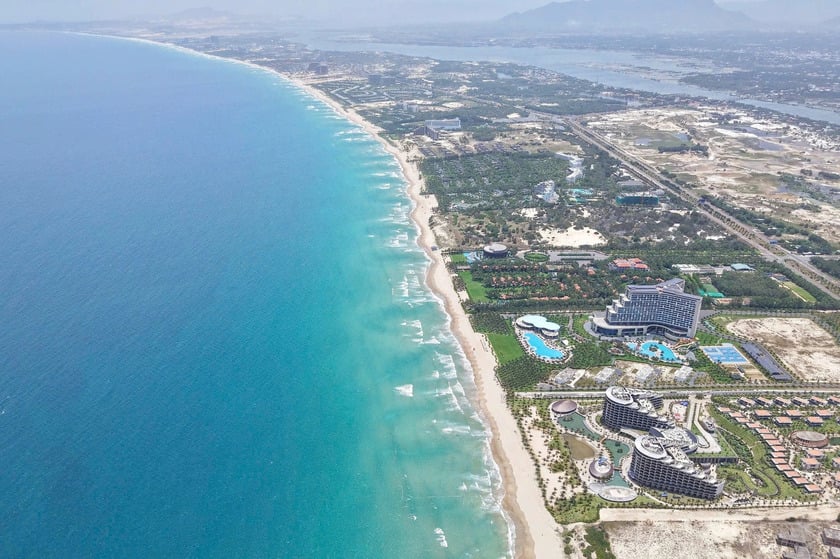
Khanh Hoa focuses on developing sea tourism

With most of its length planned with four spacious lanes, Nguyen Tat Thanh Avenue has significantly shortened the travel time between Nha Trang and Cam Ranh airport, thereby creating maximum convenience for tourists and commercial activities. It only takes about 35 to 45 minutes to travel on this beautiful road, visitors can set foot on the airport or vice versa, opening up endless journeys of discovery and contributing to affirming the position of Khanh Hoa on the map of Vietnamese and international tourism.
Ninh Thuan coastal road, where wild beauty captivates people
Along the sunny and windy Central coast, the Ninh Thuan coastal road is covered with wild and majestic beauty, attracting anyone who sets foot to explore. Not only is it a vital traffic route, this road is also a journey of discovery full of surprises, leading visitors through unique natural landscapes and distinctive cultural imprints of this land.
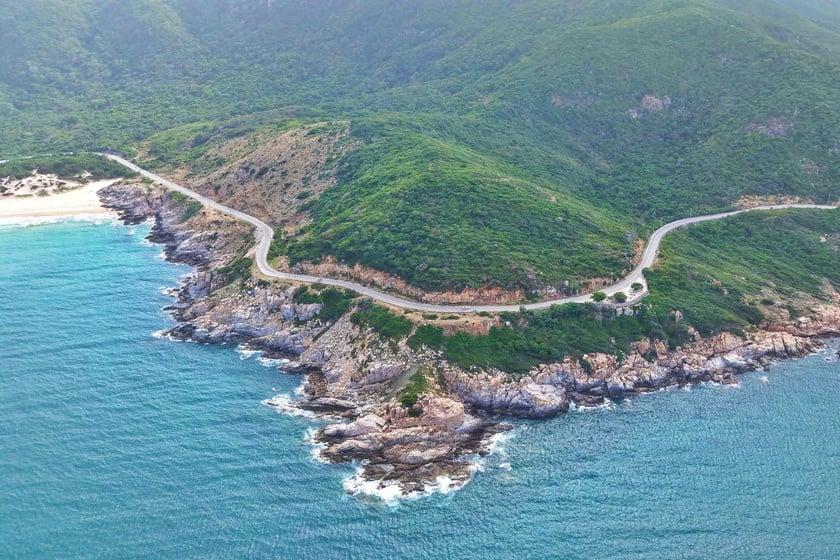
In contrast, the coastal road of Ninh Thuan has a wild and rustic appearance.
Famous as the country’s number one renewable energy center, Ninh Thuan is proud to own a synchronous and modern transport infrastructure system. With 57 wind and solar power projects in operation, the impressive total capacity of more than 3,700 MW not only affirms its pioneering position in the field of clean energy but also contributes to promoting the province’s sustainable economic development.
In addition, the continuous road system, seamlessly connecting economic zones, and deep-water seaports convenient for maritime trade have created a solid foundation for comprehensive development. In particular, the coastal road stretching from Ca Na in Thuan Nam district to Vinh Hai commune in Ninh Hai district not only plays the role of a bridge between the mainland and offshore islands, but also carries important strategic significance for regional economic development and ensuring national security and defense.
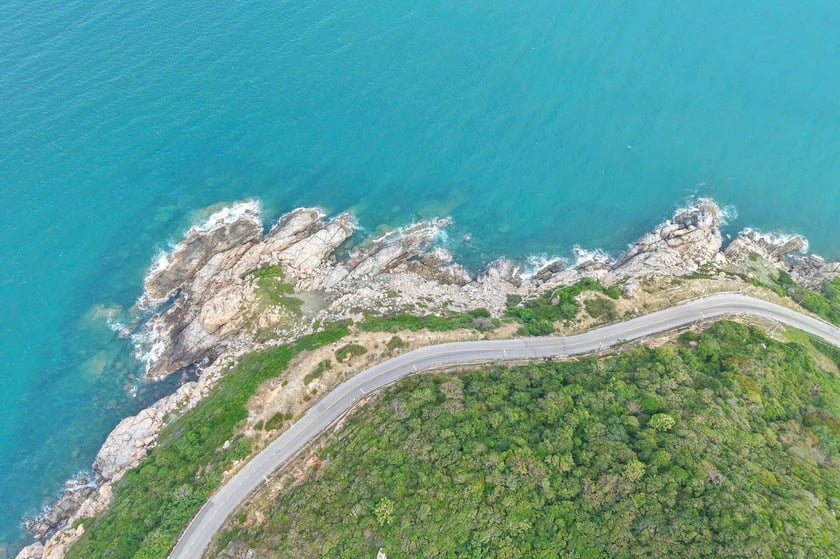
Ninh Thuan's coastal road passes through Nui Chua National Park, one of 11 world biosphere reserves recognized by UNESCO.
With its unique geographical advantages, typical dry climate and a coastline of more than 105 km full of potential, Ninh Thuan is like a rough gem being polished, possessing countless destinations that captivate people. Vinh Hy Bay, one of the eight most beautiful bays in Vietnam, appears like a watercolor painting with emerald green water embracing majestic rocky mountains. Nui Chua National Park, one of 11 world biosphere reserves recognized by UNESCO, is a convergence of diverse and rich ecosystems, from primeval forests to brilliant coral reefs.
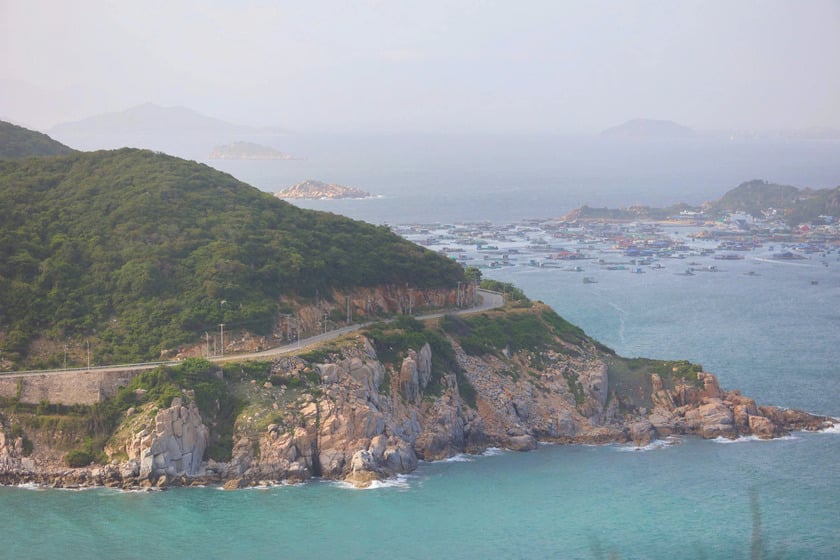
The “new” Khanh Hoa province, with the addition of Ninh Thuan, not only increases in geographical length but also enriches its tourism, cultural depth, economic potential and an ambitious vision towards the sea. This creates a seamless sea tourism corridor, promising to unleash endless potential along the central coastal strip.





